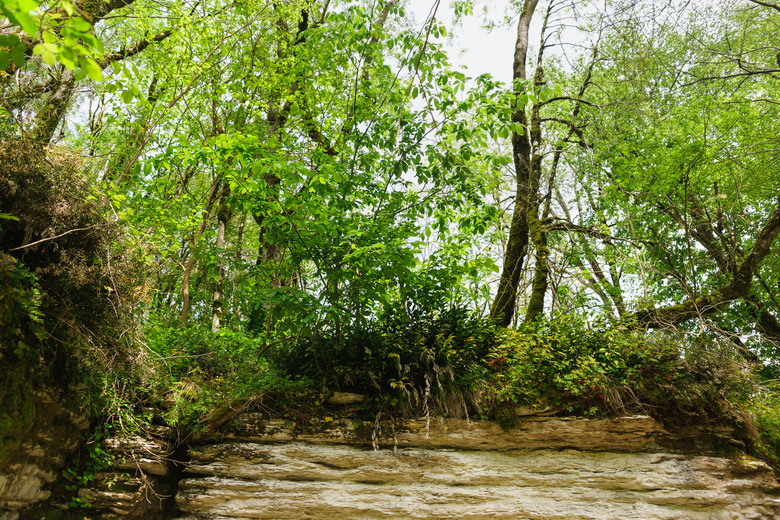Endangered Animals In Coniferous Forests
Coniferous forests, also called taiga or the boreal forest in northern Eurasia, have long winters and moderate to high annual precipitation. Lakes, bogs and rivers are part of the landscape dominated by pines spruces, firs and larches and mosses, liverworts and lichens cover the ground. Most of the trees are evergreen creating a contrast against the white, snow-covered scenery during the winter months. Only specific species are able to survive in this distinguishable environment and some of them are found on the Endangered Species List.
Grizzly Bear
Grizzly Bear
The grizzly bear has concave face, claws almost the size of human fingers and fur that varies from dark brown to light cream and black. The name grizzly comes from the long hairs with white tips on their backs and shoulders which give it the "grizzled" look. Adult males can weight 300-850 pounds and females 200-450 pounds. Grizzlies are omnivorous and their diet includes both vegetation and animals. Their diet varies between seasons and depends on what food is available. About 1,000-1,200 grizzly bears can be found in five separate populations in the lower 48 states. The grizzly bear is listed as a threatened species in the lower 48 states and endangered in Canada. In Alaska, grizzlies are game animals with regulations.
Spotted Owl
Spotted Owl
The spotted owl is dark brown with small white spots. The spotted owl hunts at night and its diet includes flying squirrels, woodrats, bats and other owls. It has a wingspan of 39.8 inches and it weights 17.6-24.7 oz. The spotted owl does not built its own nest and it has 1 to 3 eggs. They are greatly affected by clear-cut logging and are often found in the middle of the controversy between loggers and environmentalists. The spotted owl is listed as endangered in Canada, but is only considered to be "threatened" in the United States.
Woodland Caribou
Woodland Caribou
Woodland caribou has gray or gray-brown coat with white spots on shoulders, chest, belly and under tail. Its estimated population is 1.5 million but the population is quickly declining in Canada. Caribous have long legs to wander in deep snow and solid bodies to make them stable. They can weight 220-420 pounds and reach the height of three to four feet. During summer months, woodland caribous eat green vegetation but when the winter comes their diet includes only lichen. Threats for caribou include industrial development, logging, oil and gas exploration, mining, recreational activities and tourism.
Siberian Tiger
Siberian Tiger
The habitat of the Siberian tiger includes southeast Russia and the estimated wild population today is approximately 350-450 tigers. The Siberian tiger is the largest tiger species and it can be up to 13 feet in length and weight 700 pounds. Reasons leading to Siberian tiger being endangered are poaching and habitat loss caused by logging and development. Tigers are poached for their fur and body parts, such as bones, that are used in Chinese medicine. Even though China has declared using tiger parts in medicine illegal, poaching is still common.
Siberian Crane
Siberian Crane
Siberian crane can be found in arctic Russia and western Siberia, and its natural habitat are wetlands with pools of shallow and clear fresh water. Siberian crane has white body and feathers and bright red spot on the face. Cranes can grow to be 3-3,5 feet in length and weight 16-20 pounds. They are omnivorous eating vegetation and insects during their mating season but only vegetation during other times of the year. Hunting on its migratory route to India and destruction of wetlands have made Siberian crane endangered.
References
Cite This Article
MLA
Rissanen, Eija. "Endangered Animals In Coniferous Forests" sciencing.com, https://www.sciencing.com/endangered-animals-coniferous-forests-5299579/. 22 November 2019.
APA
Rissanen, Eija. (2019, November 22). Endangered Animals In Coniferous Forests. sciencing.com. Retrieved from https://www.sciencing.com/endangered-animals-coniferous-forests-5299579/
Chicago
Rissanen, Eija. Endangered Animals In Coniferous Forests last modified March 24, 2022. https://www.sciencing.com/endangered-animals-coniferous-forests-5299579/
